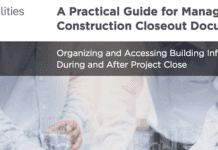By Roger McCarron and Andy Halik
The U.S. Bureau of Labor statistics reported staggering spikes in construction material prices between May 2020 and May 2021: increases of 146% for refined petroleum products such as diesel fuel and asphalt base, 114% for lumber and wood products, 107% for cold-rolled steel sheets used for metal studs, and 39% for copper wire and cable. In mid-June, lumber futures for July delivery were down 42% from their record high reached in early May.
Across all property types, both ground-up and renovation projects are facing the dual challenges of price volatility and scarcity of supplies. And with general contractors, subcontractors, and suppliers unable to guarantee pricing of materials more than a few weeks out, many are shifting the risk associated with price uncertainty to owners and developers. Mitigating these risks can be challenging, but the following tactics can help alleviate the effects on a project’s bottom line:
1. Assemble the team early.
At Skender, we’ve found that combining project teams sooner rather than later can significantly increase speed-to-revenue. When architects and contractors collaborate early in the process, either in a design-build or design-assist delivery method, schedules can proceed more quickly, and expensive, time-consuming redesigns can be avoided. For example: in a ground-up project, a smart design choice regarding the location of the major vertical circulation (i.e., stairs and elevators) can result in significant cost savings.
2. Invest in Lean Construction.
To achieve greater stability, reliability, efficiency, and flexibility, owners and developers should leverage Lean construction principles and tactics. In addition to navigating material shortages, a Lean builder such as Skender can help maximize ROI by conducting ongoing research, monitoring economic trends, and providing counsel on lifetime costs, environmental impact, inflation, and other factors. A builder with a Lean approach specializes in optimizing projects for efficiency and reducing waste during all stages of construction — both of which can help mitigate risks associated with rising material costs.
 3. Amend budgets.
3. Amend budgets.
Historically, material cost increases have slightly exceeded the rate of general inflation (3-5%); in the current environment, PMA advises owners and developers to consider escalation contingencies of 10-15% per year. Predicting exactly when material prices will stabilize is impossible, but establishing strategic budget reserves, contingencies, and reinvestment plans can help owners and developers manage risk.
One budgeting approach Skender’s teams have employed involves building a strategic buffer and establishing a timeline for reassessing risk, then gradually releasing reserved funds back into the project as economic conditions improve. For a project with a $15 million budget, aim to spend $14.5 million, and systematically release the balance as appropriate. Converting surplus contingency adds real value and can enable developers and building owners to secure wish-list items, from upgraded finish materials to appliances and landscaping.
4. Explore alternative or unconventional materials.
At both PMA and Skender, we are firm believers that expanding materials options for every component of a building, from the foundation and superstructure to the various systems and interior building materials, can help control costs. Pre-cast concrete, ready-mix concrete, DensGlass, zip-board, and alternative wood species can all be useful substitutes for materials that are over budget or difficult to procure. For wood-framed projects, prefabricated wall panels and framing systems can limit material waste, decrease labor costs, and potentially expedite project schedules.
Now more than ever, owners and developers should be challenging architects and engineers to exercise their creativity and incorporate unconventional materials in their designs, as well as ensure that extending the list of acceptable substitutes does not compromise on safety, quality, durability or functionality.
5. Procure materials well in advance.
In addition to exploring alternative materials, both our firms suggest procuring materials in advance whenever possible to mitigate risks around pricing and availability. Buying materials earlier typically results in cost savings and greater decision-making power about other factors later in the project. It mitigates unknown exposure to shortages and can ensure access to materials when needed. Some owners and developers have made the decision to purchase materials directly, believing it will avoid markup costs. But going that route also eliminates a variety of services and introduces a higher level of risk, so it’s not something to undertake without examining the full picture.
6. Manage contracts and partner with contractors.
Developers and owners should be mindful of how material price volatility can affect both new and existing agreements. At PMA, we emphasize the importance of fully understanding any material cost escalation clauses. Often, force majeure clauses will be modified to allow for recovery of costs (not just time extensions) for catastrophic events, which can lead to cost escalation. Developers should also avoid contracts with open-ended allowances for material costs. In the current environment, partnering with contractors and suppliers to set an indexed price point with a cap, with an agreement to share in the savings or overages up to the cap, is a more appropriate approach to mitigating risk. This approach also allows for owner participation in any upside as prices stabilize.
Last but not least, owners and developers should keep in mind that steep increases in material costs may lead to subcontractor defaults or bankruptcies. Staying abreast of subcontractors’ and material suppliers’ financial health is critical to minimizing project disruption, even when construction agreements are properly structured to protect the owner from subcontractor defaults. Prompt payment and properly structured agreements can go a long way in helping subcontractors manage cash flow. Ultimately, avoiding default is a better outcome than merely being protected if the situation does occur.
The economy is uncertain, and owners and developers have no way of knowing exactly when the prices for building materials will stabilize. Fortunately, the risks associated with material price volatility are generally tolerable and quantifiable. A combination of the above strategies—along with a little extra planning, creativity, and flexibility—can help mitigate economic variables and ensure reliable, on-time, on-budget delivery of construction projects.
 McCarron is President and CEO of Project Management Advisors Inc. (PMA), a national real estate advisory firm providing consulting services including owner’s representation, investor representation, program management, project management, and construction management.
McCarron is President and CEO of Project Management Advisors Inc. (PMA), a national real estate advisory firm providing consulting services including owner’s representation, investor representation, program management, project management, and construction management.
 Halik is Vice President and corporate interiors co-lead of Skender, a Chicago-based full-service commercial construction firm that combines Lean processes with high-performing teams to deliver quality results and maximum value.
Halik is Vice President and corporate interiors co-lead of Skender, a Chicago-based full-service commercial construction firm that combines Lean processes with high-performing teams to deliver quality results and maximum value.













 3. Amend budgets.
3. Amend budgets.



![[VIDEO] Collect Asset Data at the Speed of Walking a Building](https://facilityexecutive.com/wp-content/uploads/2024/02/maxresdefault-324x160.jpg)